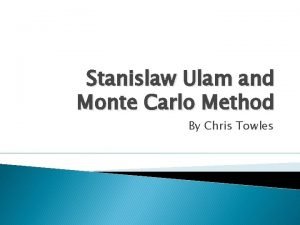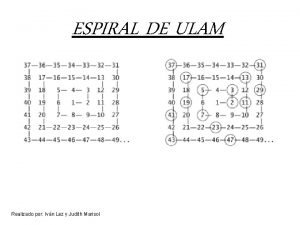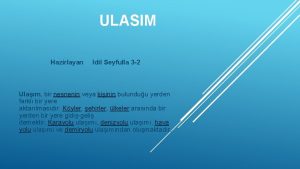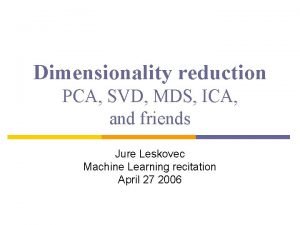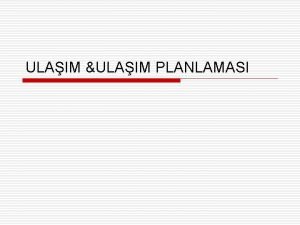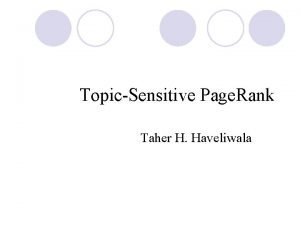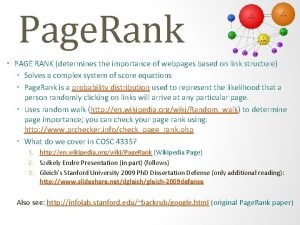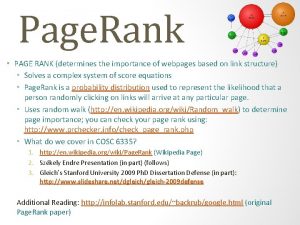Page Rank opinon formation models on Ulam networks








- Slides: 8

Page. Rank opinon formation models on Ulam networks Levon Chakhmakhchyan A. I. Alikhanyan National Science Laboratory, Yerevan, Armenia Laboratoire Interdisciplinaire Carnot de Bourgogne, Dijon, France In collaboration with D. Shepelyansky FR/ARM CLASSQUANT

Modeling opinion formation processes Modern social networks Øexhibit scale-free, small world properties: differ much from regular lattices Øeach node (user) has its degree of authority Weigh the degree of authority by means of a node’s Page. Rank Brin, Page, Comput. Netw. ISDN Syst. (1998)

Ulam networks y yn+1=f 1(xn, yn) xn+1=f 2(xn, yn) j x Page. Rank and Google matrix properties of Ulam networks share common features with some real networks i Shepelyansky et. al , Phys. Rev. E 81 (2010); Ulam network (Ulam, “A collection of mathematical problems”, NY 1960) x Ermann et al. , Phys. Rev. E 81 (2010).

Page. Rank model of opinion foramtion (PROF) • opinion is influenced by the closest linked nodes (friends) • influential friend’s opinion counts more than less important friend’s opinion Two possible opinions are incoded by an Ising spin: +1 (red) and -1 (blue) Σi=Pj, in++Pj, out+- Pj, in--Pj, outΣi>0 a node votes for red Σi<0 a node votes for blue

PROF model on Ulam networks f(t)=Nred/N random distribution the elite members of the same opinion

Generalized PROF-Sznajd model for 2 D mappings P 3<P 1+P 2 P=P 1+P 2 P 3 Sznajd-Weron, J. Sznajd, Int. J. Mod. Phys. C (2000). initial distirbution final distirbution The top elite nodes first tend to convince other members of the elite

Summary üPage. Rank model of opinion formation on Ulam networks is proposed üElite can impose its opinion up to a certain degree and firstly tends to convince other members of the elite üThe system may not come to a steady state if groups of the same opinion are considered üThe model exhibits certain distinctions from similar models examined on real networks (Kandiah, Shepelyansky, Physica A (2012)) LC, D. Shepelyansky, Phys. Lett. A 377, 3119 (2013)

Thank you
